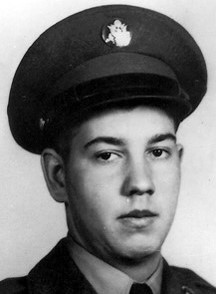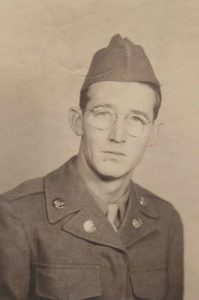Castle, Robert Earl
Army Private
Robert Earl Castle, age 19, from Johnson County Kentucky.
Service era: Korea
Date of death: Monday, July 31, 1950
Death details: On July 26, 1950, the 2nd Battalion, 7th Cavalry Regiment, and 2nd Battalion, 8th Cavalry Regiment, were defending a section of the Poun-Hwanggan Highway from North Korean People’s Army (NKPA) elements advancing toward Kumch’on. On July 30-31, supported by tanks, the NKPA launched heavy attacks against the American battalions. After a hard-fought delaying action, the 7th Cavalry Regiment received orders to withdraw to support other units at Kumch’on, and the 8th Cavalry Regiment provided cover as they withdrew. Soon after, the 8th Cavalry Regiment withdrew to new positions as well. Though the action was largely successful in delaying the NKPA advance, the area still fell under North Korean control and prevented the recovery of any American remains until U.S. forces retook the area in mid-September. Sergeant Robert Earl Castle entered the U.S. Army from Kentucky and served in H Company of the 2nd Battalion, 7th Cavalry Regiment, 1st Cavalry Division. On July 31, 1950, he was reported missing in action after the fighting and was last seen slightly wounded at one of the 7th Cavalry?s defensive outposts near Kumch’on. Battle conditions made it impossible to rescue the sergeant at the time, and the 7th Cavalry was forced to withdraw from the area shortly after. He did not appear on any official or unofficial prisoner of war rosters and attempts to locate him when American forces retook the area were unsuccessful. Today, Sergeant Castle is memorialized on the Courts of the Missing at the National Memorial Cemetery of the Pacific.
Source: National Archives, Defense POW/MIA Accounting Agency

